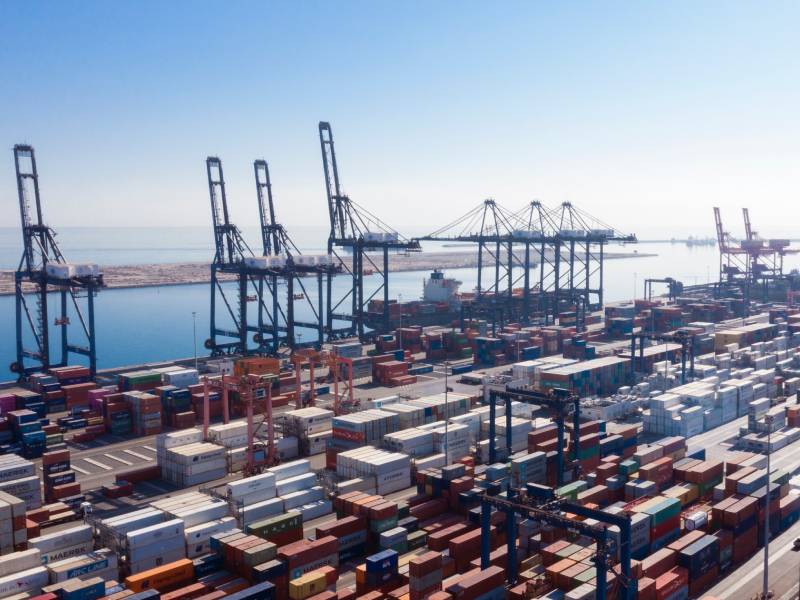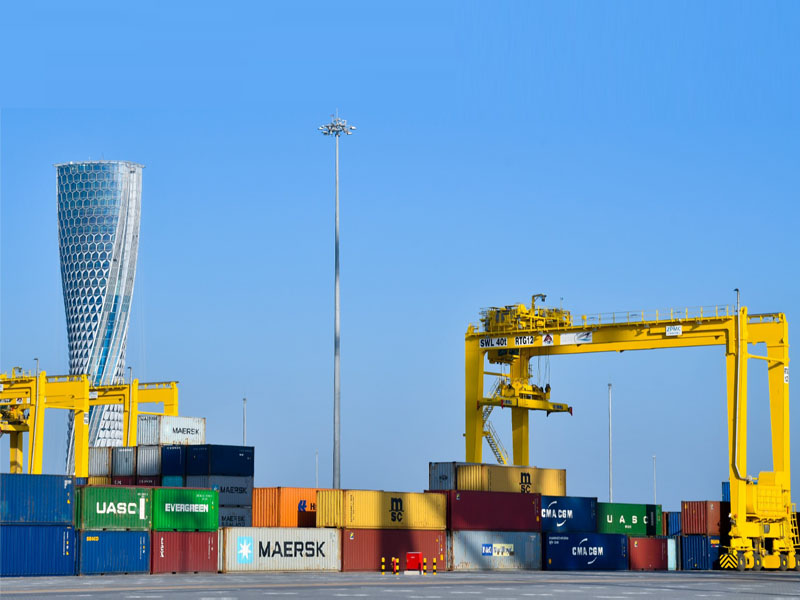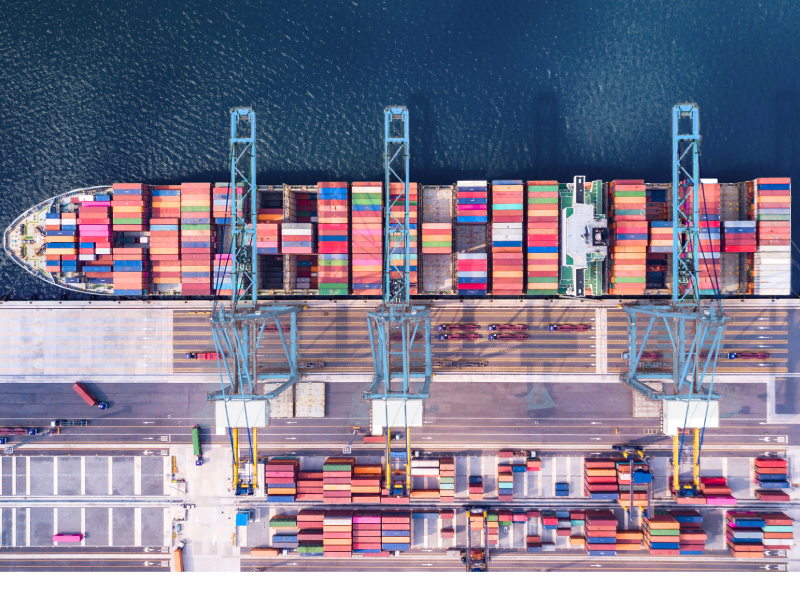A fully integrated industrial and logistics hub in Oman, SOHAR Port and Freezone is strategically situated close to Iran and other Gulf Cooperation Council states, just outside the Strait of Hormuz. Because of its strategic location at the crossroads of major trade routes between Europe, Asia, and Africa, SOHAR offers unrestricted connections to billions of consumers via land, sea, and air, as well as cutting-edge logistics facilities for a variety of cargo. The port, which is successfully run in accordance with the landlord port model, also provides a welcoming regulatory environment, first-rate transport options, and top-notch amenities. Therefore, the hub is perfect for container shipping as well as the import and export of a wide range of dry, break, and liquid bulk. As one of the fastest-growing deep-sea industrial ports in the world, SOHAR provides unprecedented opportunities for growth and continues to transform Oman’s burgeoning maritime and logistics sectors.
Each year, SOHAR Port receives thousands of calls from vessels for the transshipment of containers and bulk cargo, as well as investments from local and international businesses. In line with this, the SOHAR Freezone is a rapidly growing industrial complex that houses numerous reputable national and international businesses that have grouped together to form clusters in the agricultural bulk, petrochemicals, metal, and logistics industries.
Approximately 75% of all imports and exports for the Omani market pass through the port in Sohar, making it the entry point to Oman. Home furnishings, automobiles, food, Agri-bulk, steel, and raw materials like aggregates, limestone, petcoke, and liquid bulk, among others. According to Oman Vision 2040, the overarching long-term plan for Oman’s economic diversification and development, the focus in the upcoming years will be on the pharmaceutical, plastics, and food industries, as well as on vehicle spare parts and renewable energy projects. In this context, SOHAR is facilitating the global export of green products made using clean technologies while assisting green manufacturing industries to decarbonize and play a growing role in the energy transition. Additionally, they want to hasten the shift to a circular economy, which will help Oman’s economy grow even faster.
Port Capacity And Its Extension For Future Handling
With an annual throughput tonnage of more than 77 million, the industrial SOHAR Port welcomes more than 3,000 seagoing vessel calls. The port is one of the few international ports with deep-water jetties that can accommodate the largest ships and has a reach of over 3.5 billion consumers by land, sea, and air. The port area, which spans 2100 ha, includes fully operational businesses as well as extensive construction projects and investments totalling more than $27 billion. The SOHAR Freezone, a 4,500-hectare development, has attracted investors from 52 different nations, along with the SOHAR Port. The port has the capacity to grow by 150 hectares right away. There are plans for another 800 ha of expansion. 500 ha of the freezone’s first phase are almost entirely occupied, leaving 4000 ha available for both current and future growth.
Future-ready to meet future demands, SOHAR has consistently started large-scale expansions and made investments in infrastructure (re)developments and advanced technology. Their occupancy rate and the number of incoming vessels both continue to rise at the same time. Tens of thousands of jobs are created because of the ongoing expansion of SOHAR Port and Freezone, which also enables them to become one of the major industrial and logistical hubs in Oman and the surrounding area.
The Oman Government, which continues to prioritise and invest in logistics infrastructure programmes as it seeks to further strengthen the country’s position on the world trade and logistics map, has provided additional support for SOHAR’s expansion. By 2040, Oman’s Logistics Strategy 2040, which includes investments in infrastructure and the latest technology to upgrade ports, airport facilities, and new road links, aims to make Oman one of the top ten logistics hubs worldwide.
Amenities And Services
The port and industrial area of Sohar is divided into four main clusters: metals, agricultural products, petrochemicals, and logistics. The industrial area is divided between two terminals, one for general cargo run by the Dutch company, C Steinweg and the second for liquids run by ADVARIO Oman. Hutchison Whampoa, a Hong Kong-based company, is in charge of running a third terminal for containers. Along with the terminals, SOHAR Port offers a range of marine or nautical services in close collaboration with domestic and international businesses to give ships calling at the port a one-stop service.
Additionally, SOHAR provides port boat services and anchorage services for lay-up. All ships calling at the port can also engage in bunkering and STS (Ship-to-Ship) operations. Additionally, SOHAR offers water and food services that are available to all ships in the port basin and the anchorage area. In addition, all port users have access to a crew change service, an updated live weather report, full pilotage services, a change of armed guards, and an upgraded Port Management System.
In addition to offering investors top-notch facilities and services, they also offer numerous incentives and advantages for setting up projects at SOHAR, such as 100% foreign ownership, attractive local labour requirements, zero import/export duties, zero income tax, and corporate tax exemptions for up to 25 years. SOHAR also provides a dedicated One-Stop-Shop service for obtaining all necessary registrations, licences, and visas.
Addressing Security, Safety, And Environmental Concerns
They are prioritising sustainable practices in all of their activities, while safety and security and environmental sustainability are always on the top of their agenda. At SOHAR, they believe that ensuring high standards of safety and minimising our environmental impact are of vital importance to our business continuity. Hereto, they work closely together with relevant Government authorities, tenants and local communities, and international entities. The HSSE department continuously benchmarks with international standards and exchanges best practices with the shareholders, Port of Rotterdam and Asyad.
In line with Oman’s global carbon neutrality targets for 2050, SOHAR is dedicated to fostering a more sustainable future for their employees, clients, and the communities in which they operate. SOHAR also seeks to reduce the environmental impact of its operations.
As a result of the emergence of a global hydrogen economy, Oman has been exploring its capacity to produce and export clean hydrogen, also known as green hydrogen, at a reasonable cost. The country hopes to produce millions of tonnes of green hydrogen annually by the year 2050. In this context, SOHAR has actively invested in becoming an industrial and logistics hub that produces clean and green goods and transports these to other countries by enabling Green Manufacturing Industries at its premises, contributing to the energy transition.
SOHAR’s Environmental Monitoring System, meanwhile, makes sure that the complex and the nearby communities have safe air, water, and soil. In accordance with regulations established by the International Convention for the Prevention of Pollution from Ships (MARPOL), they also run a maritime waste collection service. Moreover, SOHAR emphasises its function in light of the transition to a circular economy. Operating at SOHAR is anticipated to be advantageous for innovative businesses that concentrate on generating revenue streams from recovering valuable materials, used materials, and/or developing innovative products. When it comes to the safety of their work environment, they aim to limit occupational hazards, while a safe work environment results in better productivity.
Cohesive Ecosystem
At SOHAR, they combine international expertise with regional knowledge. They are confident that SOHAR Port and Freezone will continue to expand and put Oman on the map for international trade and logistics with the ongoing support of the shareholders at ASYAD Group, Oman’s integrated logistics provider, and the Port of Rotterdam in the Netherlands.
The interconnected local and international businesses that make up SOHAR’s industrial clusters compete and work together in a top-notch, strategically located business environment. Because SOHAR promotes growth in a variety of economic sectors, it enables global partnerships and port clusters with synergistic inter-sectoral links that boost innovation, productivity, and optimum efficiency and support the socioeconomic development of Oman.
Economic Development
The primary port of entry for import and export in Oman is SOHAR, which boosts the GDP and generates almost tens of thousands of opportunities for direct and indirect employment. In accordance with the goals outlined in Oman Vision 2040, the country’s road map for long-term economic development, SOHAR is currently assisting in the development of Oman’s logistics infrastructure and economic diversification with a focus on sustainable development, expansion, and cutting-edge technology. Since port-related activities account for a sizeable portion of the value added to the national economy and contribute to the process of economic diversification, their activities have a significant positive economic spillover to the rest of Oman.
As previously mentioned, Oman’s Logistics Strategy 2040 is a roadmap for transforming Oman into a top-ten logistics hub by the year 2040. It includes investments in modernising ports, airport facilities, and new road links using cutting-edge technology and infrastructure. In this regard, the ongoing development of SOHAR Port and Freezone opens up new prospects for increased throughput, which boosts economic value, generates tens of thousands of jobs, and enables us to establish ourselves as one of the principal industrial and logistical hubs in the area. The integrated industrial, logistics, and port complex SOHAR will house full value chains for manufacturing, food production, and energy in 2040.




